
Where We Be

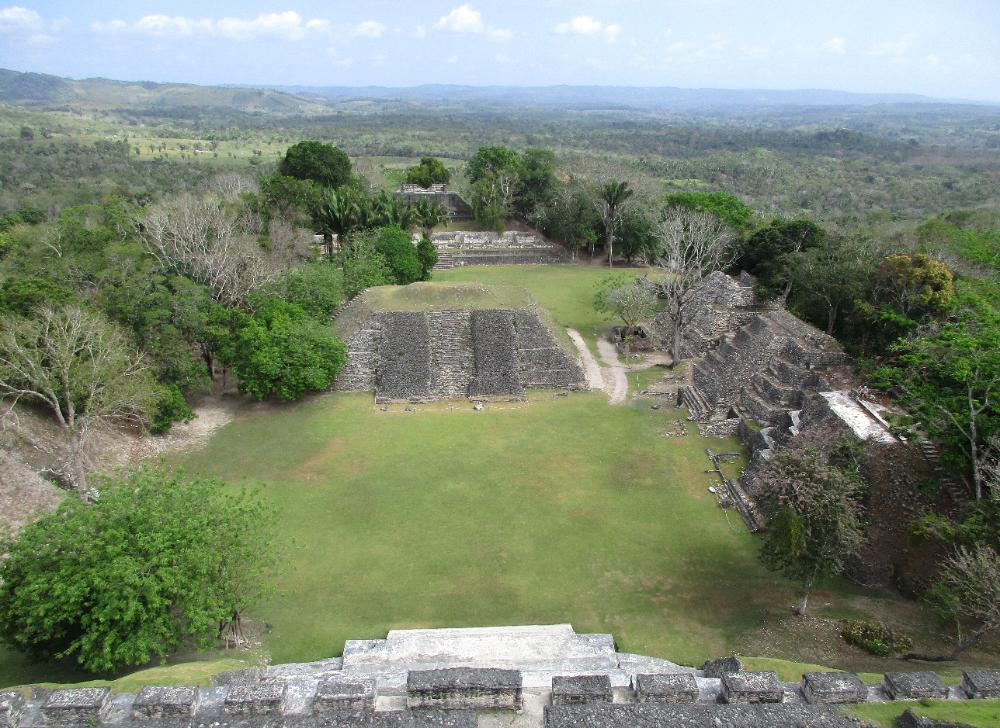
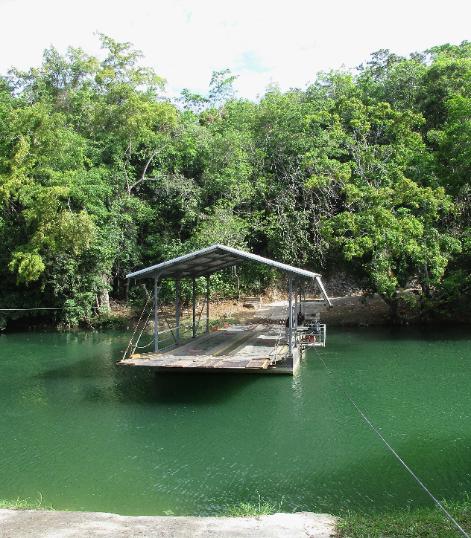
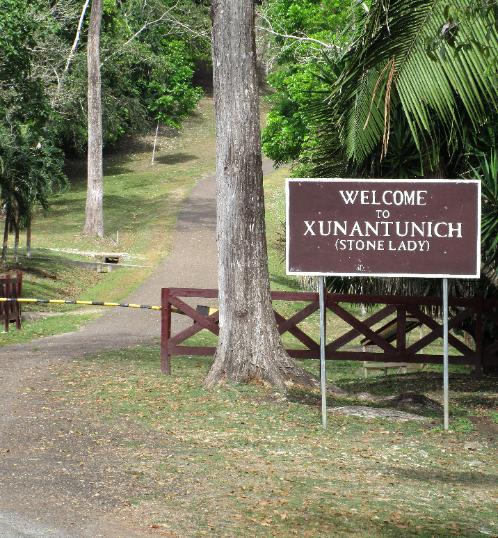
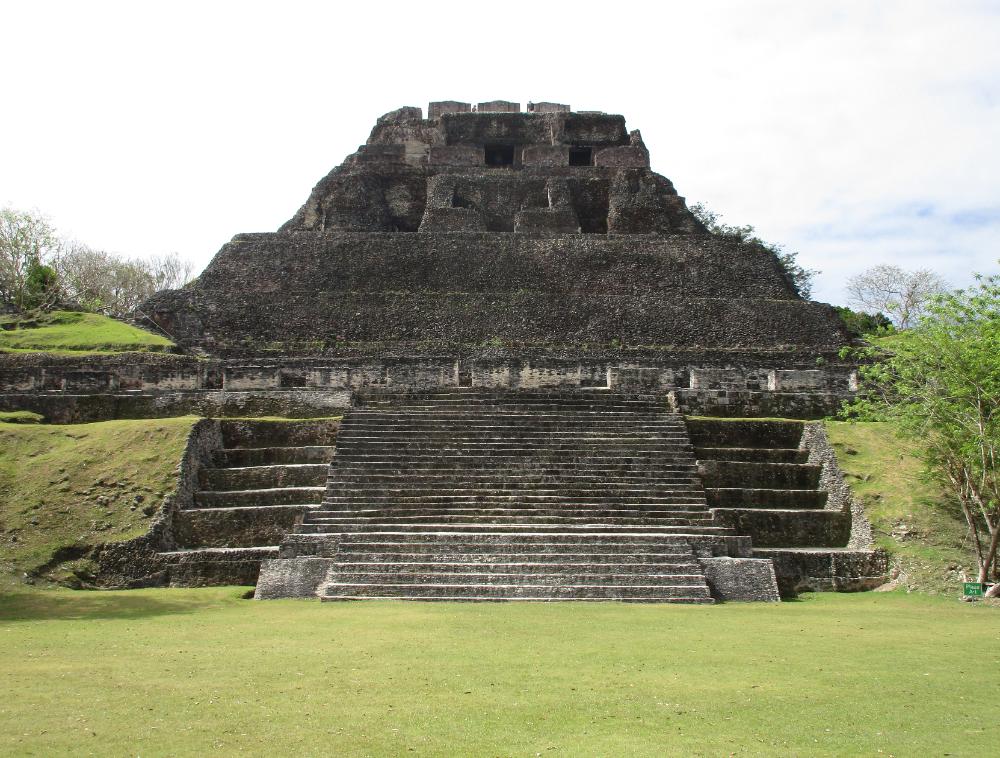
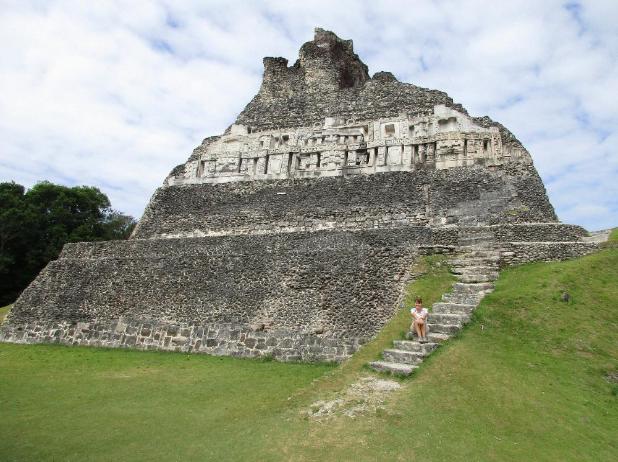
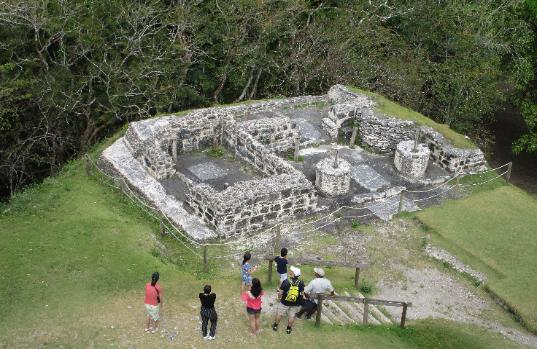
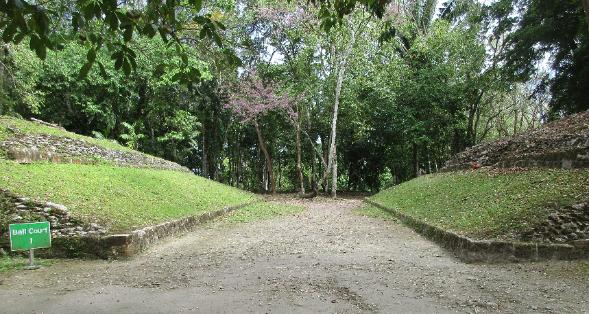
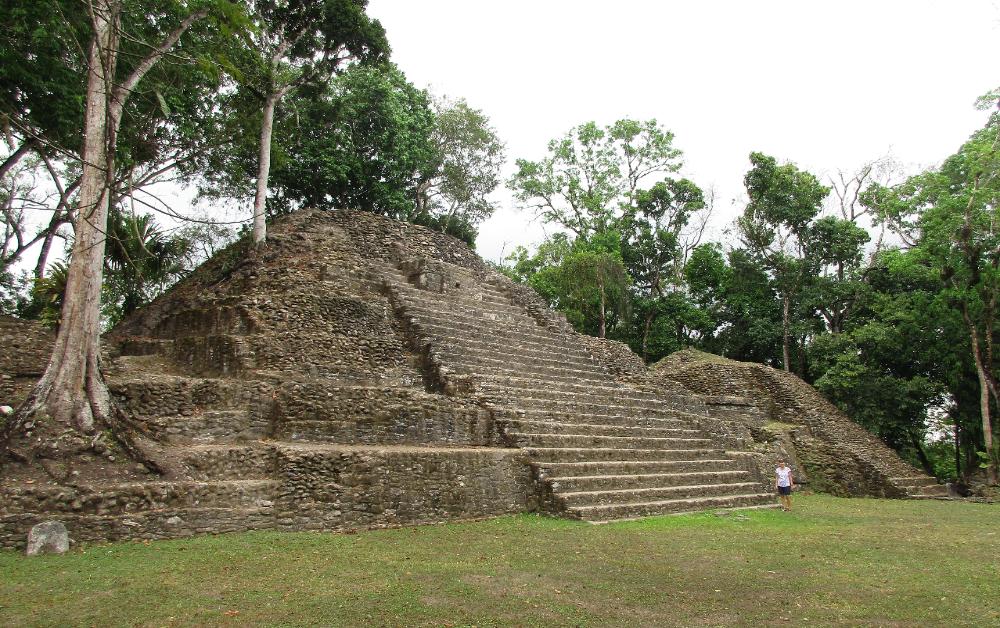
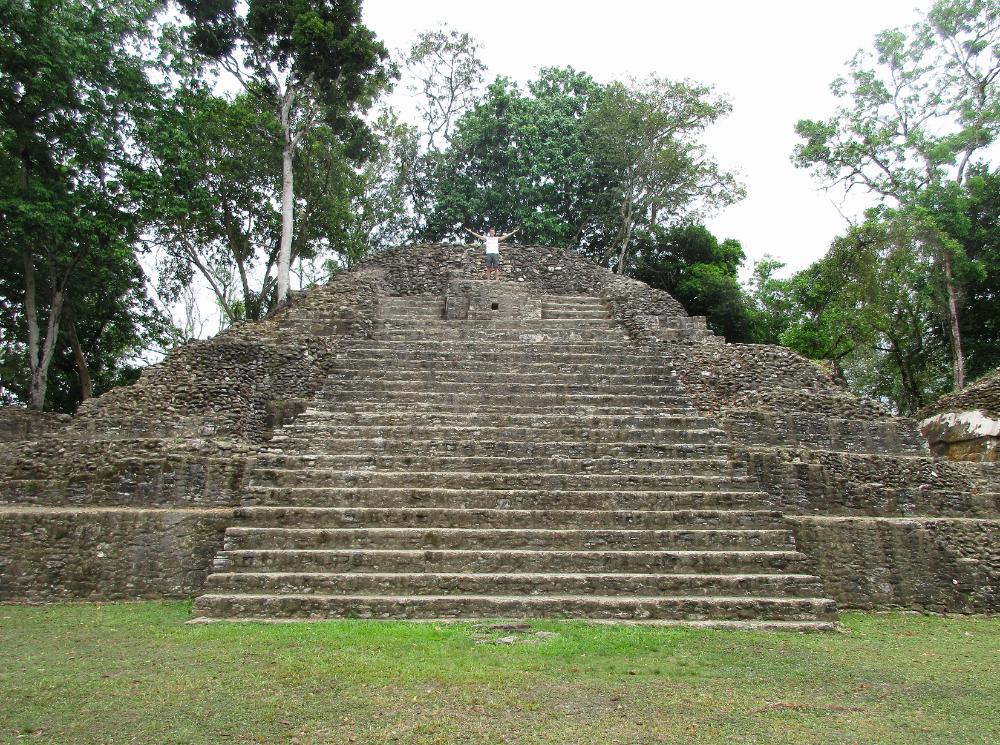
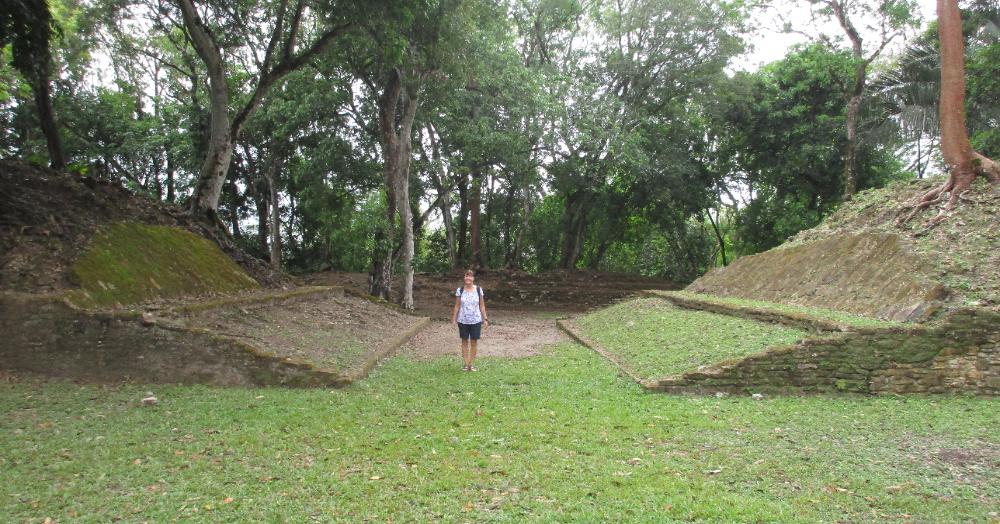
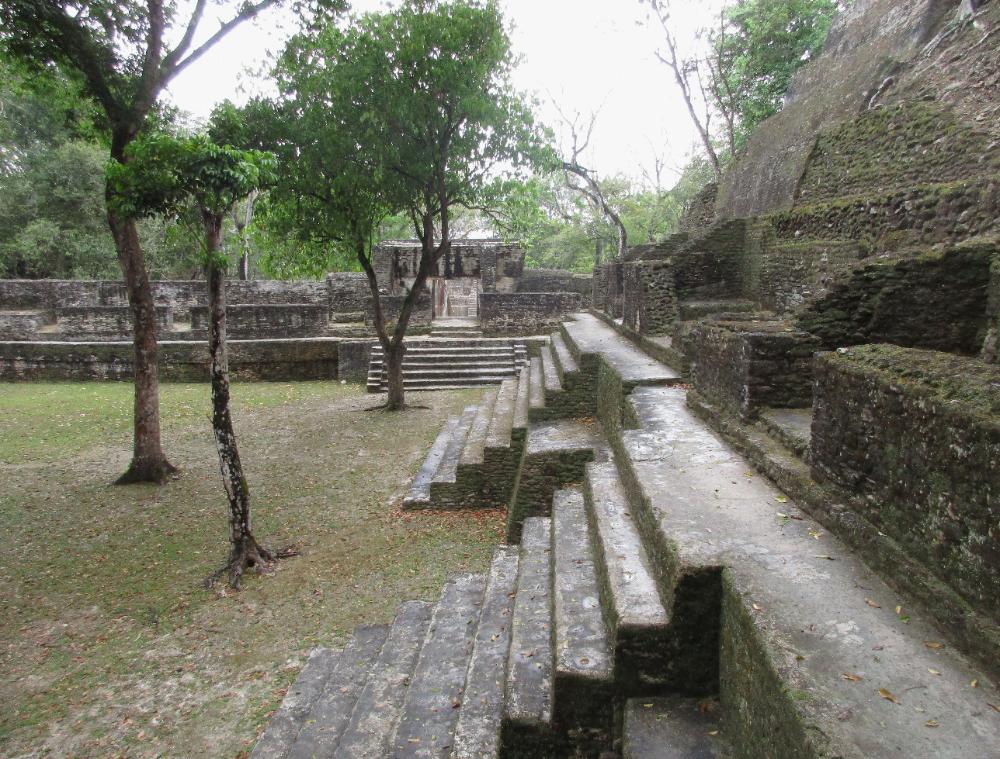
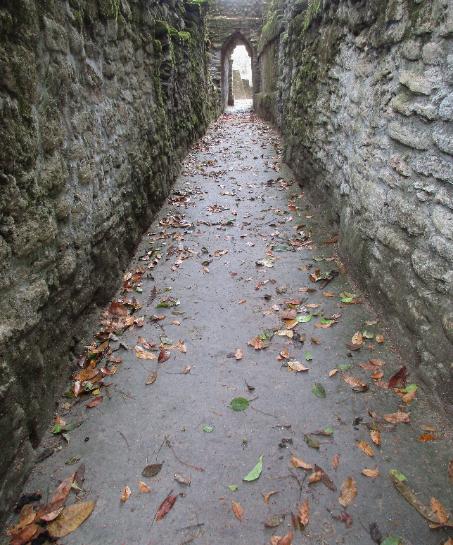
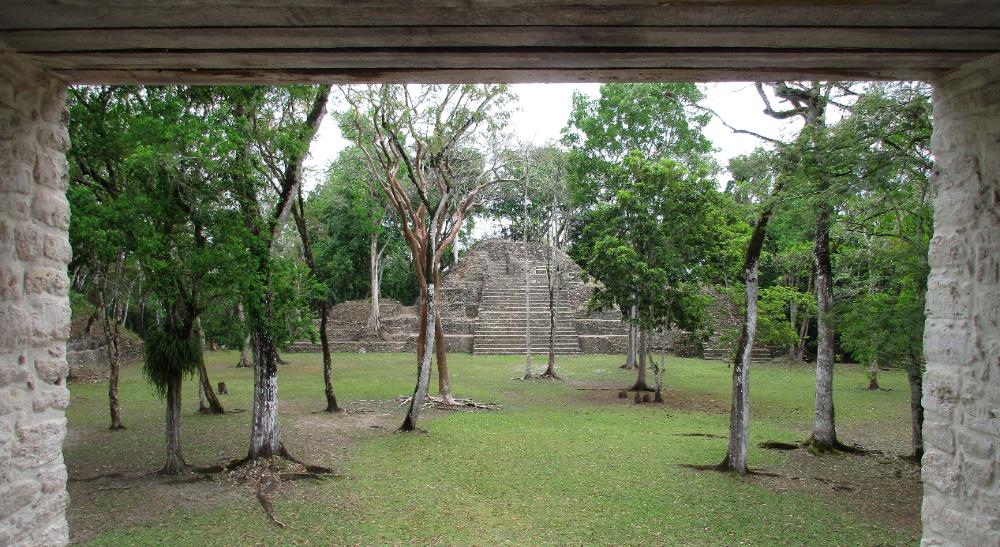
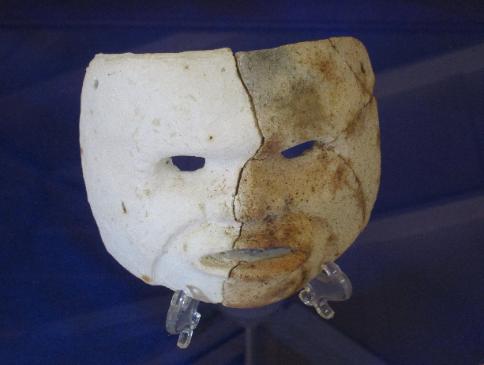
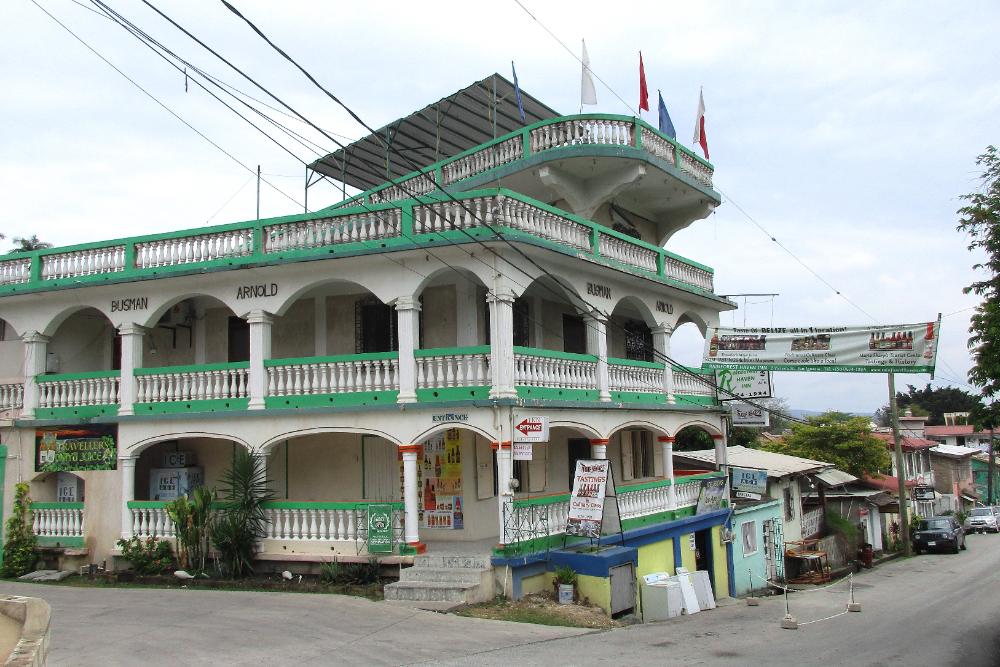
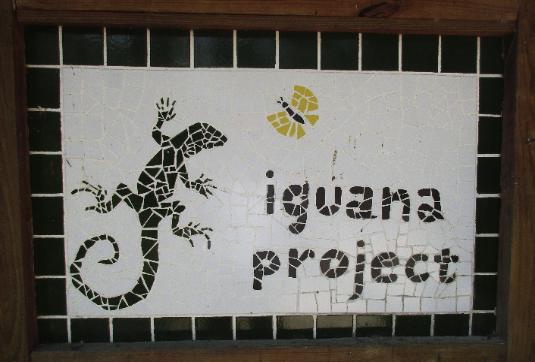
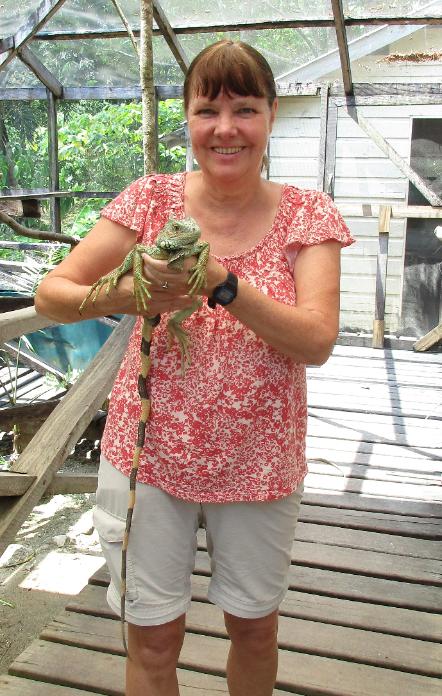
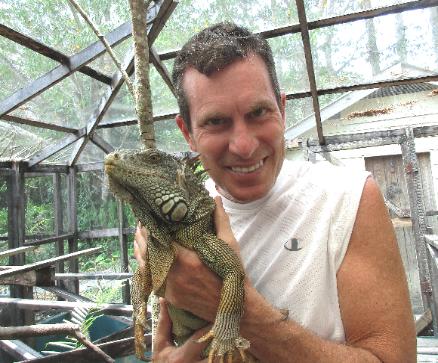
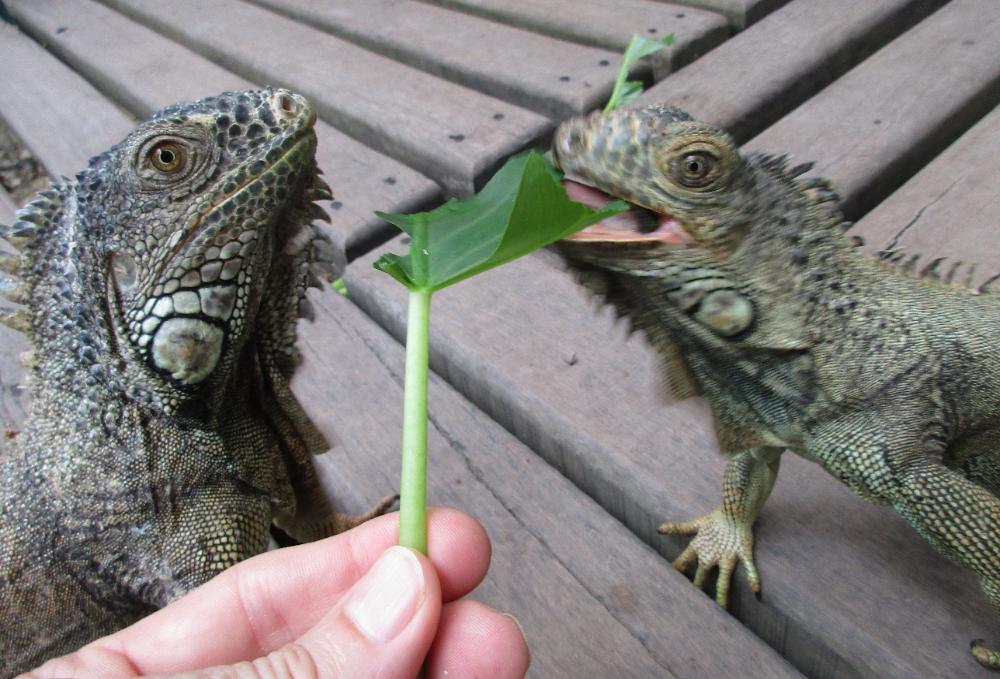
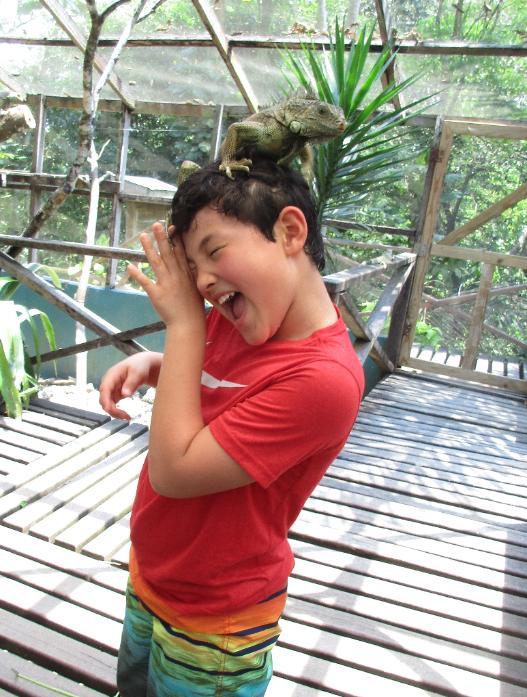
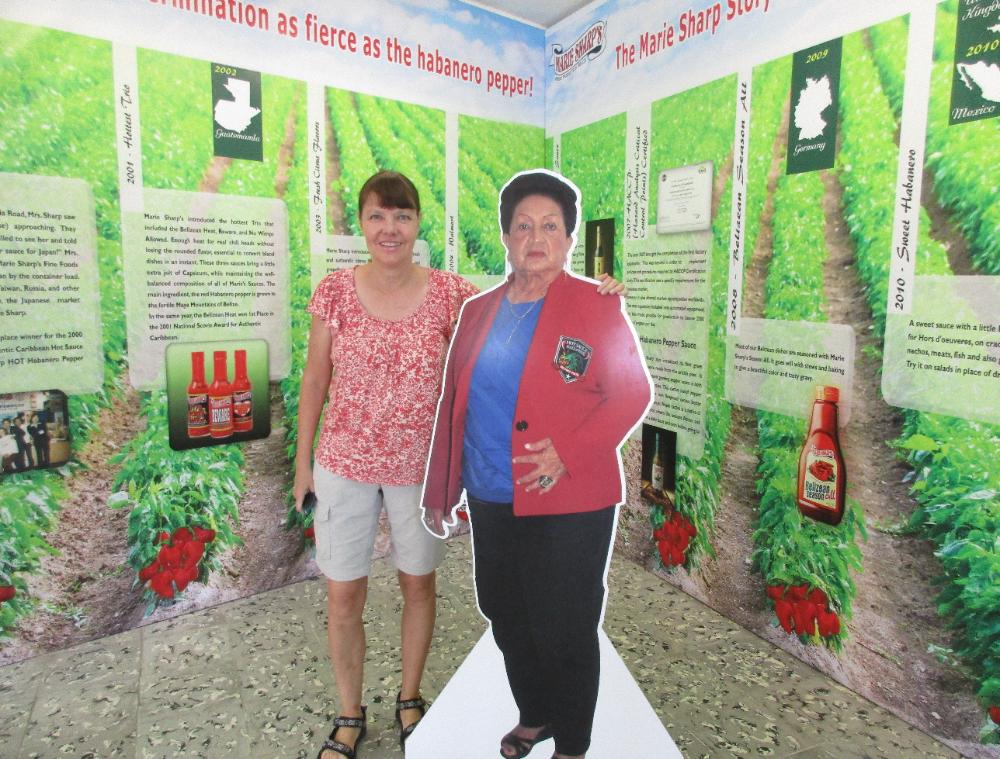
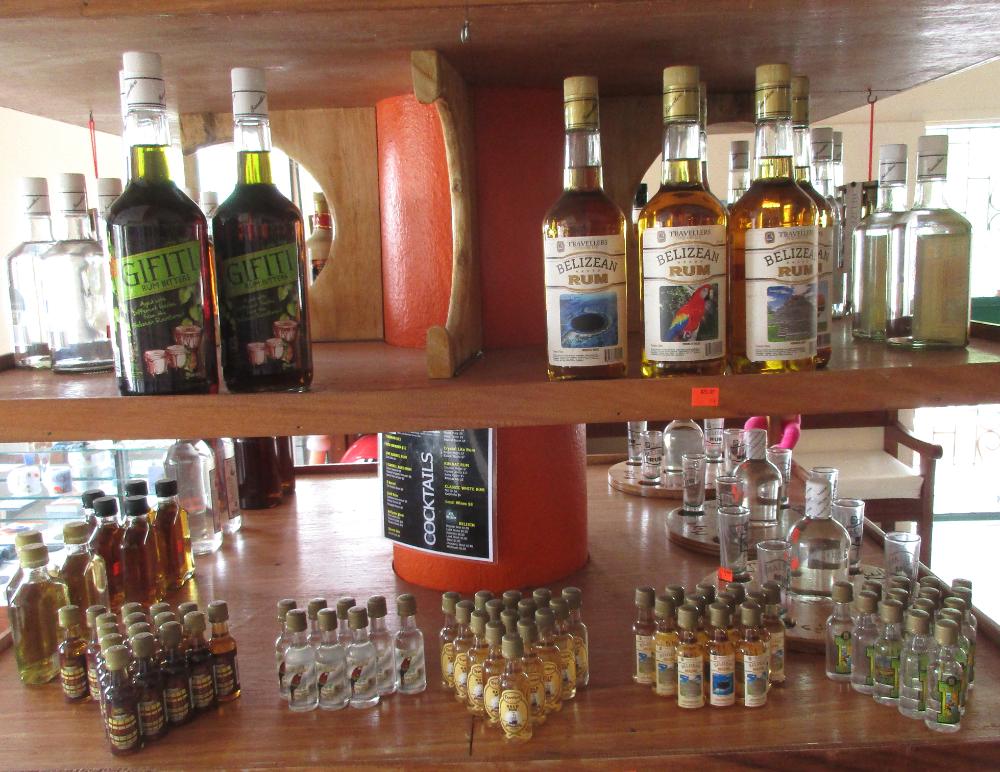
| If you like Mayan ruins, don't miss El Castillo at Xunantunich, with its frieze of Mayan images about three-quarters of the way up on the eastern side |
| San Ignacio, Belize |
| The taxi from San Ignacio dropped us off here. We took a free hand-cranked ferry across the river -- an extremely short trip of about a minute. Then we walked about a mile uphill to the Mayan ruins. We paid 10 BZD each ($5 US) for entry. We arrived around 9 am so it was still relatively cool out and there were only a few other tourists there. |
| We’re glad we didn’t skip Xunantunich. These Mayan ruins were definitely worth a visit and it only took 15 minutes to get here by taxi. We immediately keyed into the largest ruin, El Castillo -- a large pyramid that dominates the site. |
| The frieze is a replica, with the original hidden a meter behind to protect it. The central image is of Chac, Mayan god of rain. |
| This is a fun and easy activity since it's right in town ($9 US pp). It's hosted by the San Ignacio Resort Hotel -- an 8-minute uphill walk from our Rainforest Haven Inn. |
| We went at 11 am when it was hot, but on the plus side, iguanas are at their most active when it's hottest |
| Some fun iguana facts: Iguanas have a third "eye" on top of their head that lets them see light or dark so if a bird is swooping down on them they have some warning. They really can lose their tail and regrow it. Males have two penises (!) Oh, and they really like having the tops of their heads rubbed. |
| They seemed ravenous even though they'd just eaten on a previous tour. They really like their leafy greens! They'd rip and tear at them, shaking their heads to pull off chunks. And these ones are spoiled – they aren't interested in the stems, only the good leafy parts. |
| We stayed at Rainforest Haven Inn and loved it for its location, cool AC, fast wifi, private bath, and shared kitchen. Downstairs is the home of Marie Sharp’s Hot Sauce as well as a rum tasting and culinary area. |
| Marie Sharp is quite the character, and her story is told on placards on the walls. Everywhere you go in Guatemala and Belize you'll find Marie Sharp's Hot Sauce on almost every table. It's one of Belize's most successful exports. |
| You can do a rum tasting here too. Wine is imported and expensive in Belize but you can get a whole bottle of good rum for 20 BZD ($10 US). |
| Looking down at a small ruin just to the west. From here you can easily see into Guatemala -- the border is only about a mile away. |
| You can climb all the way to the top of El Castillo and the view is spectacular. This was a major ceremonial center with ~25 temples and palaces. There's no guardrail at the top, just a precipitous edge, so be aware. |
| The site includes two Mayan ball courts. The game was played with a heavy ball of solid rubber weighing about 9 pounds. Players had to get the ball through a stone hoop without using their hands -- only elbows, knees, and hips. It's believed the winners were lauded as heroes and the losers sacrificed. |
| We saw this black spiny-tailed iguana on the way back down. After recrossing the Mopan River, we simply walked over to one of the waiting taxis. Note: In San Ignacio look for taxis with license plates starting with BVO (short for Benque Viejo). They only charge 5 BZD ($2.50 US) pp for the 15-minute ride to Xunantunich. You can take any taxi back for the same price. |
| Cahal Pech Mayan ruins are located just a mile or so from town. We took a taxi one way to the top since it saved us a steep uphill climb ($5 US total). We paid $5 US each for entry and soon found ourselves all alone at this cool Mayan site. |
| This is a much smaller group of Mayan ruins than Tikal, of course, but in its own way that makes it quite pleasant. We were the only ones here at 9 am. You can climb where you will -- here you can see me on top of the temple. |
| Like Xunantunich, Cahal Pech has its own Mayan ball court. Ready for a game? |
| We liked how self-contained Cahal Pech felt, with the pyramids and buildings centered around several open courtyards. You could picture living here quite happily back in the day. |
| Narrow stone walkways connect various parts of the site. The trapezoidal doorways often require ducking (even for Robin). Birdsong was everywhere -- we heard and saw parrots, parakeets, toucans, and kiskadees. |
| That such interesting ruins are located within easy walking distance of San Ignacio is pretty amazing. It makes them fun and easy to explore. |
| We spent about an hour at the site, exploring, relaxing on the pyramid steps, soaking up the atmosphere, and checking out the small museum onsite before walking home. |
| Green Iguana Conservation Project |
| Marie Sharp's Hot Sauce |
| Xunantunich |
| Cahal Pech |
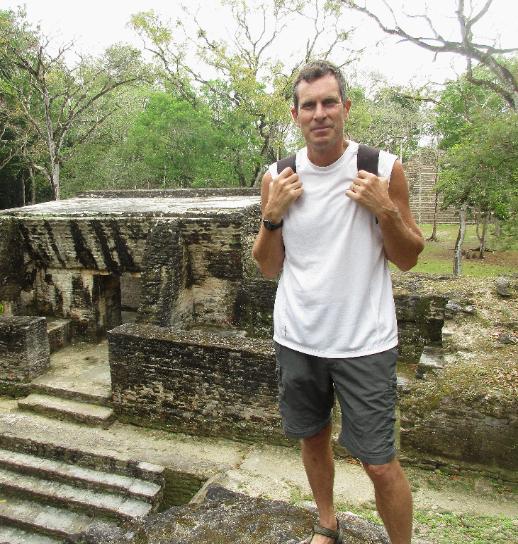
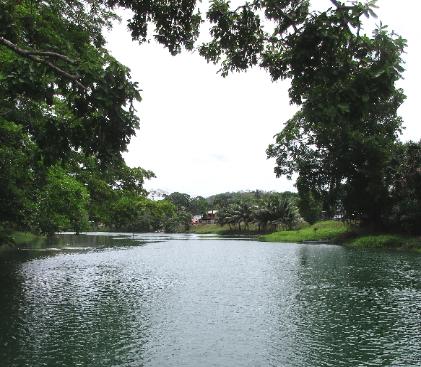

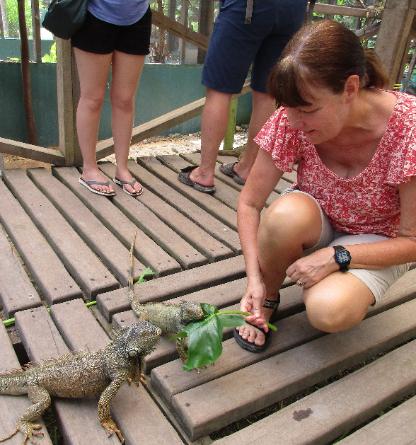
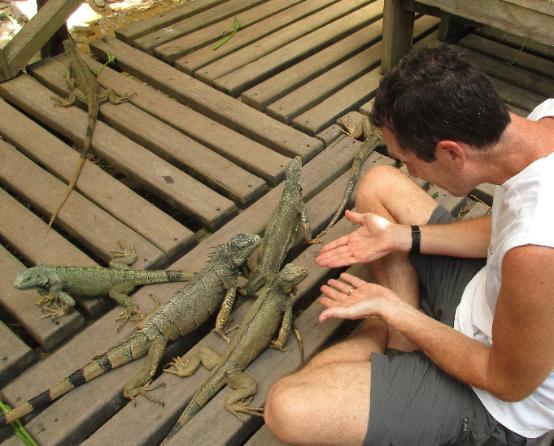
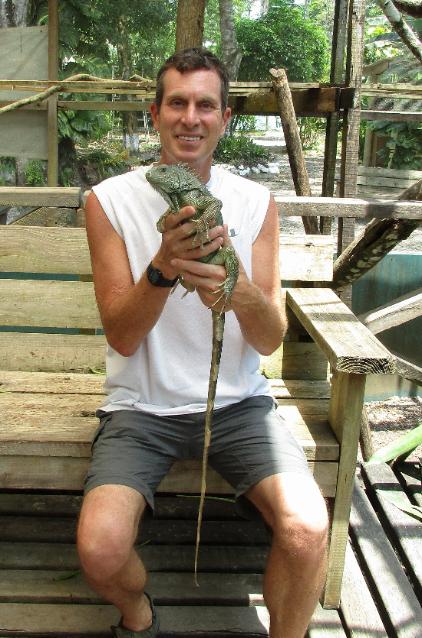
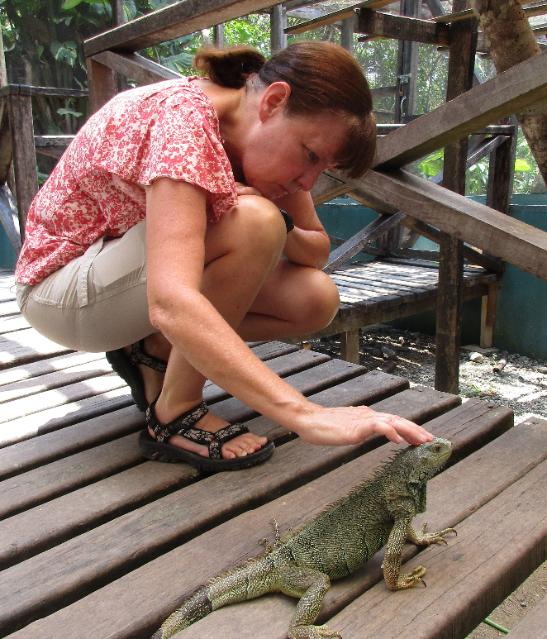
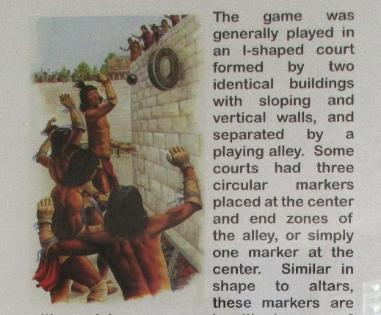
San Ignacio is essentially the tourist hub for
jungle adventures in the western part of Belize
near the border with Guatemala. There's a lot to
do here and we kept plenty busy all five days.
Tops on nearly everyone's list is the awesome
Actun Tunichil Muknal (ATM) cave tour. This is
THE thing to do in the San Ignacio area -- in fact
it's #1 in all of Belize per Trip Advisor. It's an
extensive and beautiful water cave and an
impressive Mayan archaeological site all rolled
into one. No photos are permitted in the cave.
We also enjoyed a much quieter activity right in
town -- the Green Iguana Conservation Project
at San Ignacio Resort Hotel. We got to hold and
feed the ravenous iguanas, and if you rub their
heads just so they close their eyes and look
like they're in heaven. Mayan ruins are another
big draw in the area and we checked out two:
Xunantunich and Cahal Pech. You can walk to
Cahal Pech -- although we took a taxi one-way
then walked home. Xunantunich requires a cab
both ways but it's cheap. We thought both ruins
worthwhile even after having just seen Tikal. If
you've had your fill of ruins, cave tubing and
ziplining are also very popular here.
jungle adventures in the western part of Belize
near the border with Guatemala. There's a lot to
do here and we kept plenty busy all five days.
Tops on nearly everyone's list is the awesome
Actun Tunichil Muknal (ATM) cave tour. This is
THE thing to do in the San Ignacio area -- in fact
it's #1 in all of Belize per Trip Advisor. It's an
extensive and beautiful water cave and an
impressive Mayan archaeological site all rolled
into one. No photos are permitted in the cave.
We also enjoyed a much quieter activity right in
town -- the Green Iguana Conservation Project
at San Ignacio Resort Hotel. We got to hold and
feed the ravenous iguanas, and if you rub their
heads just so they close their eyes and look
like they're in heaven. Mayan ruins are another
big draw in the area and we checked out two:
Xunantunich and Cahal Pech. You can walk to
Cahal Pech -- although we took a taxi one-way
then walked home. Xunantunich requires a cab
both ways but it's cheap. We thought both ruins
worthwhile even after having just seen Tikal. If
you've had your fill of ruins, cave tubing and
ziplining are also very popular here.
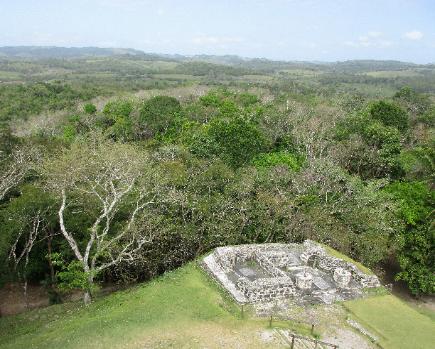
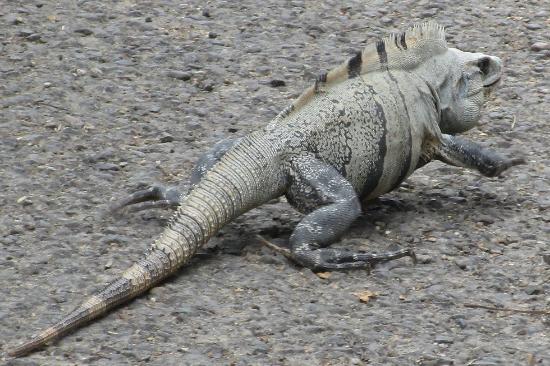
| Getting to feed them was a definite highlight. They looked disappointed when I ran out! Each tour to the iguana enclosure is 45 minutes long, starting on the hour. The enclosure is shaded and filled with about twenty iguanas. |